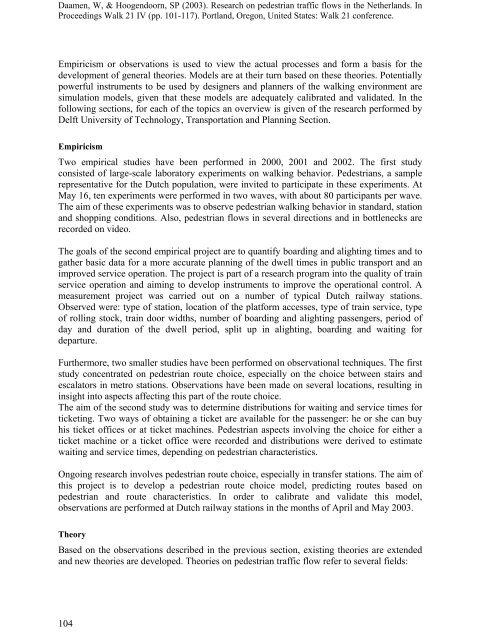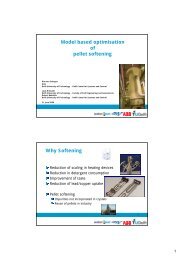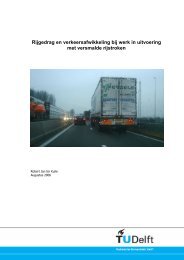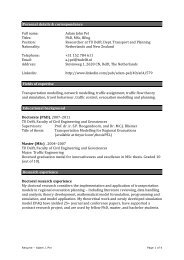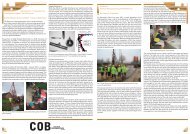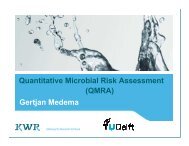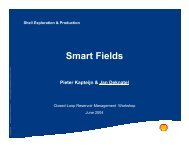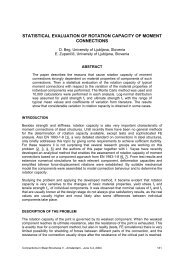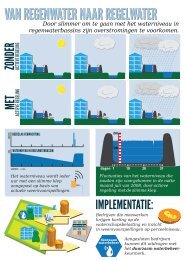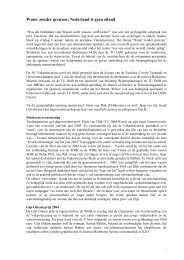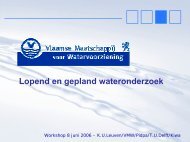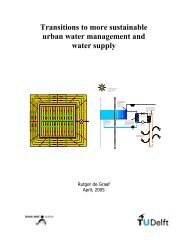Research on pedestrian traffic flow in the Netherlands - TU Delft
Research on pedestrian traffic flow in the Netherlands - TU Delft
Research on pedestrian traffic flow in the Netherlands - TU Delft
You also want an ePaper? Increase the reach of your titles
YUMPU automatically turns print PDFs into web optimized ePapers that Google loves.
Daamen, W, & Hoogendoorn, SP (2003). <str<strong>on</strong>g>Research</str<strong>on</strong>g> <strong>on</strong> <strong>pedestrian</strong> <strong>traffic</strong> <strong>flow</strong>s <strong>in</strong> <strong>the</strong> Ne<strong>the</strong>rlands. In<br />
Proceed<strong>in</strong>gs Walk 21 IV (pp. 101-117). Portland, Oreg<strong>on</strong>, United States: Walk 21 c<strong>on</strong>ference.<br />
Empiricism or observati<strong>on</strong>s is used to view <strong>the</strong> actual processes and form a basis for <strong>the</strong><br />
development of general <strong>the</strong>ories. Models are at <strong>the</strong>ir turn based <strong>on</strong> <strong>the</strong>se <strong>the</strong>ories. Potentially<br />
powerful <strong>in</strong>struments to be used by designers and planners of <strong>the</strong> walk<strong>in</strong>g envir<strong>on</strong>ment are<br />
simulati<strong>on</strong> models, given that <strong>the</strong>se models are adequately calibrated and validated. In <strong>the</strong><br />
follow<strong>in</strong>g secti<strong>on</strong>s, for each of <strong>the</strong> topics an overview is given of <strong>the</strong> research performed by<br />
<strong>Delft</strong> University of Technology, Transportati<strong>on</strong> and Plann<strong>in</strong>g Secti<strong>on</strong>.<br />
Empiricism<br />
Two empirical studies have been performed <strong>in</strong> 2000, 2001 and 2002. The first study<br />
c<strong>on</strong>sisted of large-scale laboratory experiments <strong>on</strong> walk<strong>in</strong>g behavior. Pedestrians, a sample<br />
representative for <strong>the</strong> Dutch populati<strong>on</strong>, were <strong>in</strong>vited to participate <strong>in</strong> <strong>the</strong>se experiments. At<br />
May 16, ten experiments were performed <strong>in</strong> two waves, with about 80 participants per wave.<br />
The aim of <strong>the</strong>se experiments was to observe <strong>pedestrian</strong> walk<strong>in</strong>g behavior <strong>in</strong> standard, stati<strong>on</strong><br />
and shopp<strong>in</strong>g c<strong>on</strong>diti<strong>on</strong>s. Also, <strong>pedestrian</strong> <strong>flow</strong>s <strong>in</strong> several directi<strong>on</strong>s and <strong>in</strong> bottlenecks are<br />
recorded <strong>on</strong> video.<br />
The goals of <strong>the</strong> sec<strong>on</strong>d empirical project are to quantify board<strong>in</strong>g and alight<strong>in</strong>g times and to<br />
ga<strong>the</strong>r basic data for a more accurate plann<strong>in</strong>g of <strong>the</strong> dwell times <strong>in</strong> public transport and an<br />
improved service operati<strong>on</strong>. The project is part of a research program <strong>in</strong>to <strong>the</strong> quality of tra<strong>in</strong><br />
service operati<strong>on</strong> and aim<strong>in</strong>g to develop <strong>in</strong>struments to improve <strong>the</strong> operati<strong>on</strong>al c<strong>on</strong>trol. A<br />
measurement project was carried out <strong>on</strong> a number of typical Dutch railway stati<strong>on</strong>s.<br />
Observed were: type of stati<strong>on</strong>, locati<strong>on</strong> of <strong>the</strong> platform accesses, type of tra<strong>in</strong> service, type<br />
of roll<strong>in</strong>g stock, tra<strong>in</strong> door widths, number of board<strong>in</strong>g and alight<strong>in</strong>g passengers, period of<br />
day and durati<strong>on</strong> of <strong>the</strong> dwell period, split up <strong>in</strong> alight<strong>in</strong>g, board<strong>in</strong>g and wait<strong>in</strong>g for<br />
departure.<br />
Fur<strong>the</strong>rmore, two smaller studies have been performed <strong>on</strong> observati<strong>on</strong>al techniques. The first<br />
study c<strong>on</strong>centrated <strong>on</strong> <strong>pedestrian</strong> route choice, especially <strong>on</strong> <strong>the</strong> choice between stairs and<br />
escalators <strong>in</strong> metro stati<strong>on</strong>s. Observati<strong>on</strong>s have been made <strong>on</strong> several locati<strong>on</strong>s, result<strong>in</strong>g <strong>in</strong><br />
<strong>in</strong>sight <strong>in</strong>to aspects affect<strong>in</strong>g this part of <strong>the</strong> route choice.<br />
The aim of <strong>the</strong> sec<strong>on</strong>d study was to determ<strong>in</strong>e distributi<strong>on</strong>s for wait<strong>in</strong>g and service times for<br />
ticket<strong>in</strong>g. Two ways of obta<strong>in</strong><strong>in</strong>g a ticket are available for <strong>the</strong> passenger: he or she can buy<br />
his ticket offices or at ticket mach<strong>in</strong>es. Pedestrian aspects <strong>in</strong>volv<strong>in</strong>g <strong>the</strong> choice for ei<strong>the</strong>r a<br />
ticket mach<strong>in</strong>e or a ticket office were recorded and distributi<strong>on</strong>s were derived to estimate<br />
wait<strong>in</strong>g and service times, depend<strong>in</strong>g <strong>on</strong> <strong>pedestrian</strong> characteristics.<br />
Ongo<strong>in</strong>g research <strong>in</strong>volves <strong>pedestrian</strong> route choice, especially <strong>in</strong> transfer stati<strong>on</strong>s. The aim of<br />
this project is to develop a <strong>pedestrian</strong> route choice model, predict<strong>in</strong>g routes based <strong>on</strong><br />
<strong>pedestrian</strong> and route characteristics. In order to calibrate and validate this model,<br />
observati<strong>on</strong>s are performed at Dutch railway stati<strong>on</strong>s <strong>in</strong> <strong>the</strong> m<strong>on</strong>ths of April and May 2003.<br />
Theory<br />
Based <strong>on</strong> <strong>the</strong> observati<strong>on</strong>s described <strong>in</strong> <strong>the</strong> previous secti<strong>on</strong>, exist<strong>in</strong>g <strong>the</strong>ories are extended<br />
and new <strong>the</strong>ories are developed. Theories <strong>on</strong> <strong>pedestrian</strong> <strong>traffic</strong> <strong>flow</strong> refer to several fields:<br />
104


